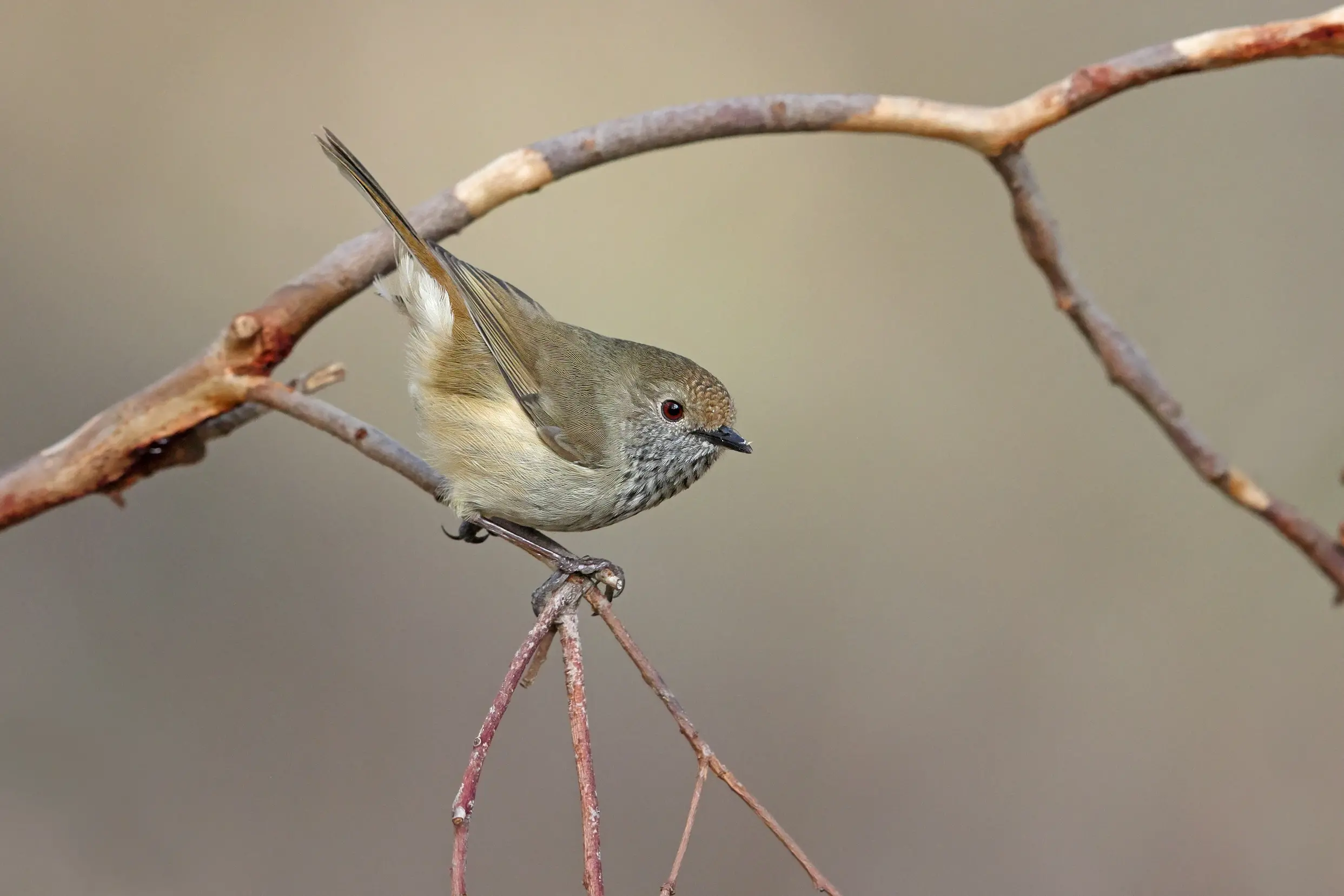PHOTO
The Brown Thornbill is another of those little brown birds that bird observers often have difficulty identifying.
It may lack the showiness of a rosella, or the melodious song of a whistler, but for many people locally, they are a familiar and welcome bird in the garden or the bush alike. Their cheeky demeanor, bold attitude and frenetic buzzing calls of these little birds can brighten the day of anyone nearby.
The Brown Thornbill is a small bird belonging to a group known as thornbills, whose name is self-explanatory when you look at their bill shape.
It has dark red eyes, with olive-brown to grey upperparts, a reddish-brown forehead scalloped with paler markings.
The rump has a reddish-brown patch, the tail is grey-brown with a black band and a pale tip, and the underparts are off-white, streaked blackish on the chin, throat and chest.
The sexes and young birds look similar.
Brown Thornbill calls can be confused with the White-browed Scrubwren, which is also common locally
The Brown Thornbill is found in dense shrubby habitats including wet and dry forests, woodlands, shrublands, heathlands and rainforests, as well as along watercourses and hence they are common in parks and gardens throughout Wangaratta.
They mainly feed on insects, but may sometimes eat seeds, nectar or fruit.
They feed, mainly in pairs, at all levels from the ground up, but most often in understorey shrubs and low trees.
Outside of breeding season they are often seen feeding in mixed flocks with other thornbills.
Breeding pairs of Brown Thornbills hold territories all year round for feeding and breeding purposes, and the bonds between pairs are long-lasting.
Females build a small oval, domed nest with a partially hooded entrance near the top out of grasses, bark and other materials, lining it with feathers, fur or soft plant down. The nest is usually low down in prickly bushes, grass clumps, or ferns.
The female incubates the eggs and both parents feed the young, who stay with the parents until early autumn, before being driven out of the parental territory.
As with several other birds, Brown Thornbills are commonly heard throughout our region due in part to the redgum woodland habitats lining our waterways and box woodlands wherever significant remnant treecover occurs.
Next time you hear the frenetic buzzing of small birds next to a low shrubby area check for these thornbills.





